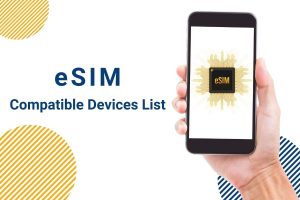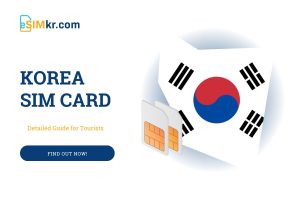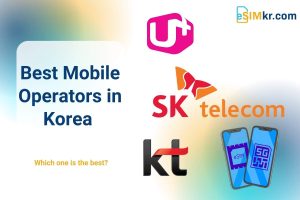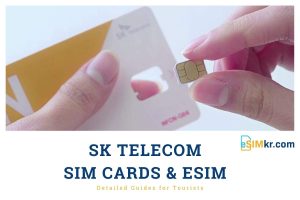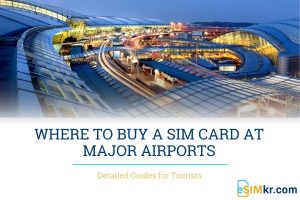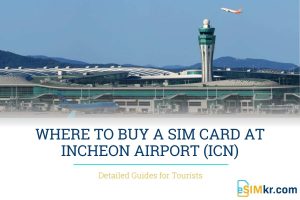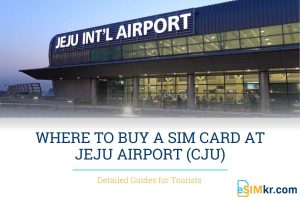South Korea is renowned for its cutting-edge technology and lightning-fast internet speeds, making it a paradise for digital nomads and tech-savvy travelers. However, navigating the mobile landscape in a foreign country can be daunting. This comprehensive guide will walk you through everything you need to know about using your cell phone in South Korea, from connectivity options to practical tips for maximizing your device’s potential during your trip.
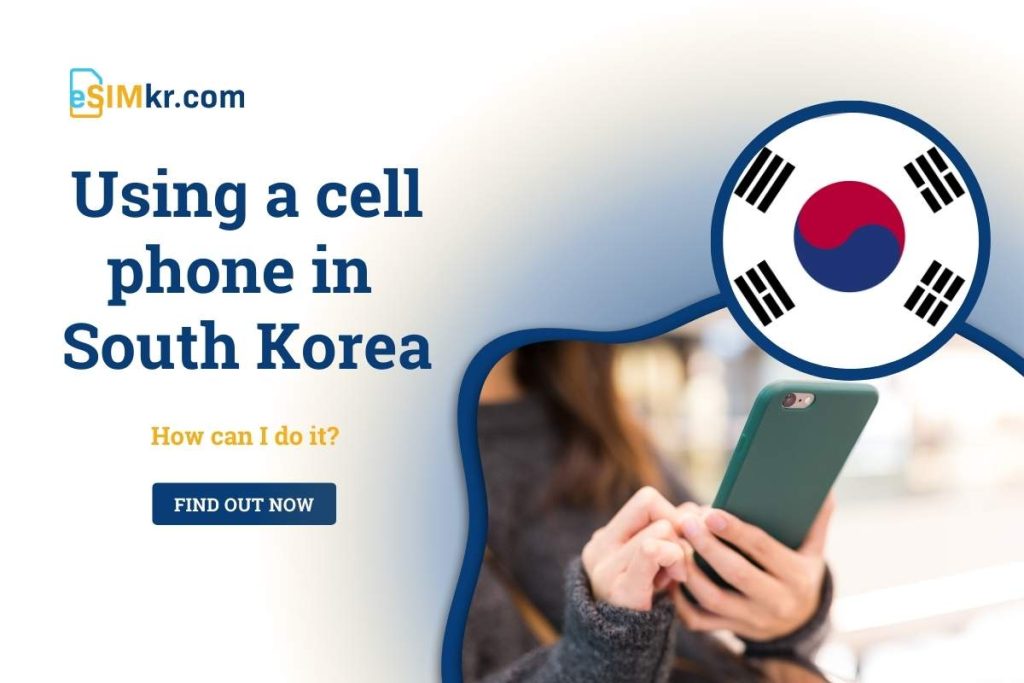
Table of Contents
I. Can I Use My Cell Phone in South Korea?
Compatibility Concerns
Using your own phone in South Korea is generally possible, but there are a few key factors to consider. The first is network compatibility. South Korea primarily uses CDMA and LTE networks, which are compatible with most modern smartphones. However, if you have an older device or one from a specific carrier, you may need to check its compatibility with Korean networks.
Unlocking Requirements
For your phone to work with a local SIM card in South Korea, it needs to be unlocked. Many carriers lock their phones to their network, preventing them from being used with other providers. Before your trip, contact your home carrier to ensure your device is unlocked or to request an unlock if necessary.
Network Bands and Frequencies
South Korea uses specific frequency bands for its mobile networks. Most modern smartphones support these bands, but it’s worth double-checking your device’s specifications. The primary bands used in South Korea are:
- 3G: 2100 MHz
- 4G LTE: Bands 1 (2100 MHz), 3 (1800 MHz), 5 (850 MHz), 7 (2600 MHz), 8 (900 MHz)
- 5G: Bands n78 (3500 MHz), n258 (26 GHz)
Limitations to Consider
While using your phone in South Korea is possible, there are some limitations to keep in mind:
- Language barriers: Your phone’s interface and apps may not support Korean, which could make navigating local services challenging.
- Geoblocking: Some apps and services may be restricted or function differently in South Korea due to regional limitations.
- Data speeds: If you’re relying on international roaming, you may experience slower data speeds compared to using a local SIM or eSIM.
- Cost: International roaming charges can be exorbitant, so it’s crucial to understand your carrier’s policies and pricing before relying on this option.
- Battery life: Your phone may drain battery faster when constantly searching for a signal in a new network environment.
Preparing Your Phone for South Korea
To ensure a smooth experience, take these steps before your trip:
- Check your phone’s compatibility with Korean networks.
- Unlock your phone if necessary.
- Update your device’s software to ensure optimal performance and security.
- Download any necessary apps, such as translation tools or maps, that can work offline.
- Familiarize yourself with your carrier’s international plans and policies.
II. How to Keep my Cell Phone Connected in South Korea
Connectivity Options Comparison
To help you make an informed decision about staying connected in South Korea, here’s a comprehensive comparison of the available options:
| Option | Pros | Cons | Price Range |
|---|---|---|---|
| Free Local WiFi | – No cost- Widely available in cities- No SIM card needed | – Limited to hotspot areas- Potential security risks- Inconsistent speeds | Free |
| Roaming | – Convenience- Keep your home number- No setup required | – Expensive- Potential for bill shock- May have data caps or slow speeds | $10-$15/day or more |
| International Plans | – Cheaper than standard roaming- Predictable costs- Keep your home number | – Limited data allowances- May not be as fast as local options- Not all carriers offer good plans | $50-$100/month |
| Local SIM Card | – Affordable local rates- Fast, reliable connection- Large data allowances | – Requires unlocked phone- Need to swap SIM cards- May lose access to home number | $20-$50 for 1-2 weeks |
| eSIM for Travelers | – Easy to set up- Keep home SIM active- Flexible plans- No physical SIM needed | – Not supported by all phones- Limited provider options- Potentially higher costs than physical SIMs | $20-$70 for 1-2 weeks |
The Case for eSIM in South Korea
While local SIM cards have traditionally been the go-to option for travelers, eSIMs are quickly becoming a compelling alternative, especially in tech-forward countries like South Korea. Here are some reasons why an eSIM might be the best solution for your trip:
- Convenience: With an eSIM, you can set up your local connectivity before you even leave home. This means you’ll be connected as soon as you land in South Korea, without the need to find a SIM card vendor or navigate language barriers.
- Dual Number Capability: eSIMs allow you to keep your home SIM card active while using a local Korean number. This means you can still receive calls and texts on your regular number while enjoying local data rates.
- Flexibility: eSIM plans often offer more flexible options in terms of duration and data allowances. You can easily top up or change plans without having to purchase a new physical SIM.
- Environmental Friendliness: By using an eSIM, you’re reducing plastic waste associated with traditional SIM cards.
- Future-Proofing: As more countries and carriers adopt eSIM technology, getting comfortable with it now will make your future travels smoother.
- Space Saving: For those traveling to multiple countries, eSIMs eliminate the need to carry and swap multiple physical SIM cards.
- Security: eSIMs are more secure than physical SIMs as they can’t be easily removed or stolen from your device.
While eSIMs may sometimes be slightly more expensive than physical SIMs, the added convenience and flexibility often outweigh the small price difference for many travelers.
III. Optimizing Your Cell Phone Usage While Traveling in South Korea
Taking advantage of your cell phone’s full potential while traveling abroad requires some preparation and strategic usage. Here are some tips for maximizing battery life, minimizing data costs, and fully utilizing your phone’s features during your trip to South Korea.
Saving Data Usage
To keep data costs low, consider offline maps that can be pre-downloaded like Google Maps or Maps.me. Also preload content like music, videos, and podcasts onto your phone over WiFi before leaving. Disable automatic app updates and background app refreshing for non-essential apps. Browser data compression options can help too. Opt for lower video quality when streaming over mobile data networks.
Leveraging WiFi Hotspots
Public WiFi is widely available across South Korea. Look for networks labeled “Public WiFi Free” in public spaces, tourist areas, cafes, restaurants, and transportation hubs. Apps like WiFi Map make finding free connections on the go easy. A portable WiFi device keeps multiple devices online away from your hotel.
Monitoring Data Usage
Use your phone’s built-in tracker or third-party apps to monitor daily data consumption and avoid overages. Set up alerts to notify you when approaching your plan’s limit.
Extending Battery Life
Power saving modes, lowering brightness, and shorter screen timeouts can squeeze more hours out of each charge. Disable wireless radios like Bluetooth and location services unless actively using them. Use airplane mode where reception is poor. Portable chargers or battery cases offer lifelines away from outlets. Public charging stations are common in transportation hubs.
Adapting to Korea
Most phones work with Korea’s 220V power, but bring a universal adapter if needed. Popular Korean apps like KakaoTalk and Naver Maps offer superior local functionality. Adjust language and emergency contact settings. Daylight saving time is not observed.
With theseoptimization strategies, your cell phone can seamlessly support your entire South Korean trip from navigation to translation to keeping in touch with home.
IV. FAQs about Using Phone in South Korea
What mobile networks are available in South Korea?
The three main mobile networks in South Korea are KT, SK Telecom, and LG U+. KT and SK Telecom used to operate CDMA networks but have since switched to 3G/UMTS and 4G/LTE networks. LG U+ also operates on 3G/LTE.
How can I get a prepaid SIM card in South Korea?
Major providers and MVNOs sell prepaid SIM cards at airports and convenience stores. You may need to show your passport. SIMs provide data-only or calling/data packages. Carriers also offer rental smartphones and WiFi hotspots.
How much does mobile data cost in South Korea?
South Korea is considered more expensive than many countries for mobile data, though slightly cheaper options exist. Prepaid data packages start at 500MB for around ₩8,800-₩10,000. Unlimited data SIMs are available for short periods.
Are there any restrictions on using phones in South Korea?
Restrictions have eased but it’s still advised to register your SIM and device at purchase to activate service quickly. Your passport may be required. Changing SIMs between devices can cause issues.
What about using WiFi in South Korea?
South Korea has widespread public and commercial WiFi networks. Major carriers operate hotspots accessible with prepaid vouchers or SIM authentication. This provides an affordable data option.
V. What’s the Most Efficient Way to Connect my Phone in South Korea?
Assessing Your Needs
The most efficient connectivity solution depends on your specific circumstances:
- Duration of stay
- Data usage habits
- Need for a local number
- Budget constraints
- Device compatibility
Recommendations for Different Traveler Types
| Traveler Type | Recommendation |
|---|---|
| Short-term Tourists (1-2 weeks) | An eSIM or prepaid tourist SIM card offers the best balance of convenience and cost-effectiveness with ample data for basic needs without long-term commitment. |
| Long-term Visitors (1 month or more) | A local postpaid plan offers better rates and larger data allowances, but may require more documentation and a local address. |
| Business Travelers | An eSIM with a data-focused plan coupled with internet-based calling ensures connectivity upon arrival and allows for easy plan adjustments. |
| Digital Nomads | A combination of a local SIM for data and an international eSIM for backup/travel provides flexibility and redundancy. |
Conclusion
Staying connected in South Korea is easier than ever, thanks to the country’s advanced telecommunications infrastructure and the variety of options available to travelers. While each method of connectivity has its pros and cons, eSIMs are emerging as a particularly attractive option for their convenience and flexibility.
Remember that the best choice depends on your individual needs, travel style, and device capabilities. By carefully considering your options and planning ahead, you can ensure that you stay connected efficiently and affordably throughout your Korean adventure.

